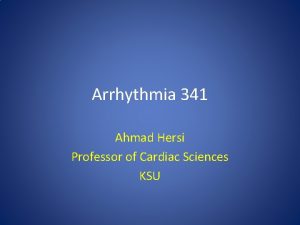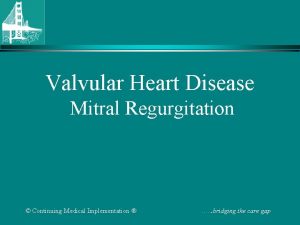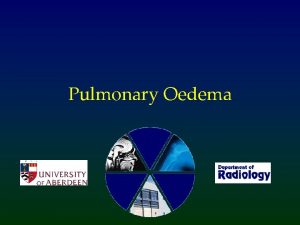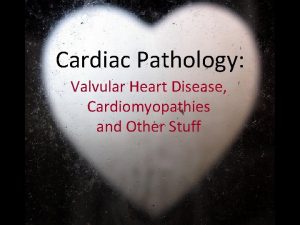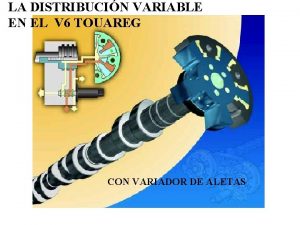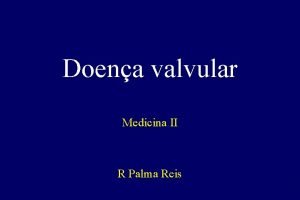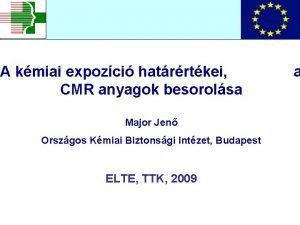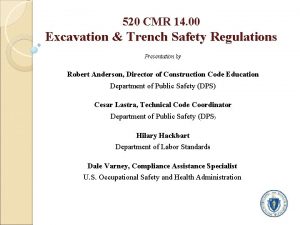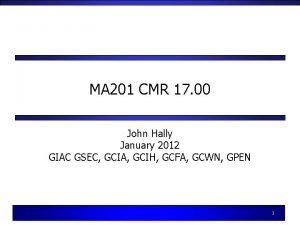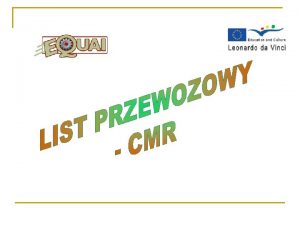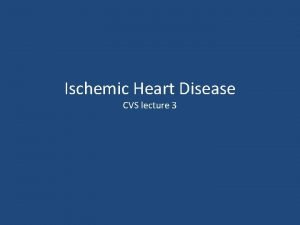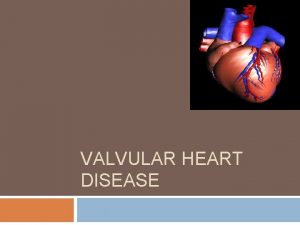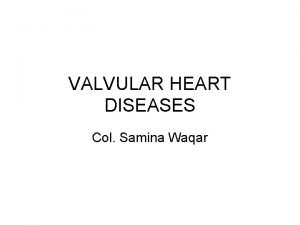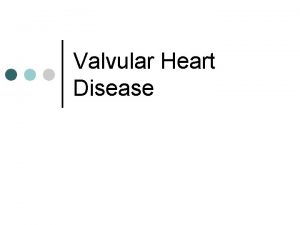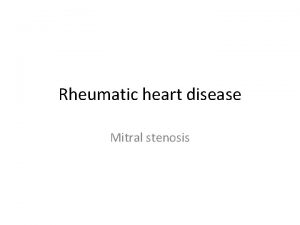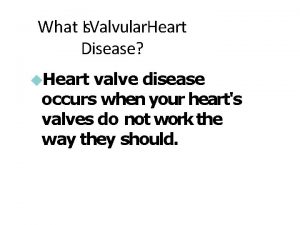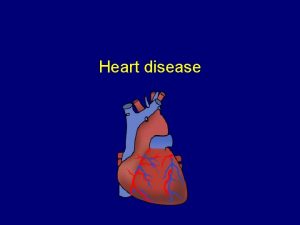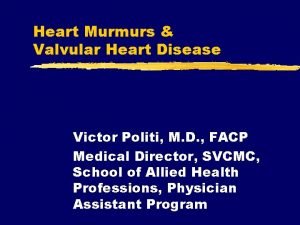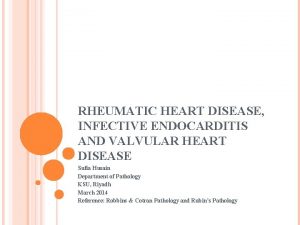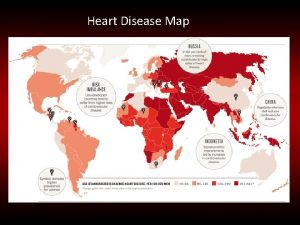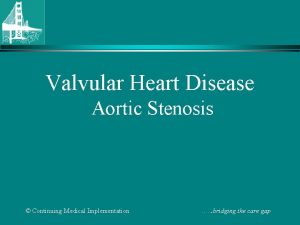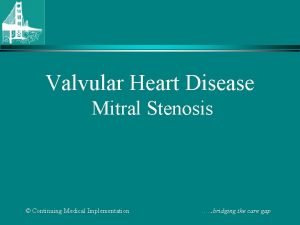How I do CMR in valvular heart disease























- Slides: 23

‘How I do’ CMR in valvular heart disease Dr. Saul Myerson Clinical Lecturer in Cardiovascular Medicine For www. scmr. org 02/2007 This presentation posted for members of scmr as an educational guide – it represents the views and practices of the author, and not necessarily those of SCMR. University of Oxford Centre for Clinical Magnetic Resonance Research (OCMR)

Advantages of CMR • All areas of the body accessible - free choice of imaging planes with no ‘hidden’ sections • Range of imaging techniques – anatomical, cine, angiography, flow • Quantification of flow and thus valve lesion severity • 3 D imaging with angiography • No ionising radiation • Other techniques (Echo) do have strengths, esp. in the acute setting © Saul Myerson 2007

Standard imaging for all studies • Long axis planes – HLA, VLA, LVOT coronal, (RVOT +/- RV inflow if right -sided lesions) • Need two perpendicular views of the valve(s) in question • LV & RV function © Saul Myerson 2007

LV and RV function This is important for assessing the impact of the valve lesion on the LV / RV and should be performed in all cases See How I do a CMR volume study by James Moon, here âGold standard accuracy for volumes, mass & function © Saul Myerson 2007

Specific valve lesions - overview • Aortic valve disease • Mitral valve disease • Pulmonary stenosis & regurgitation • Tricuspid regurgitation • Complex lesions – Mixed stenosis/regurgitation – Multiple valves © Saul Myerson 2007

Aortic stenosis (1) SA pilot LVOT view Coronal LVOT view • Plan initial LVOT view from short axis pilot scan, with the plane through the aortic root/valve • The second LVOT (coronal) plane is planned through this, aligned with the stenotic jet. There is often a central core in the jet comprising laminar flow, with turbulent flow (black/low intensity on gradient echo) surrounding this • Align planes with AS jet rather than Ao root © Saul Myerson 2007

Aortic stenosis (2) Choose the best LVOT view for in-plane flow assessment (the one with the best view of the core jet) © Saul Myerson 2007

Aortic stenosis (3) • Measure the peak velocity, either from the in-plane flow itself, or using the in-plane flow to identify the point of peak velocity and acquire a through-plane flow sequence at this point: Position for through-plane flow acquisition © Saul Myerson 2007

Aortic stenosis (4) • Measure the valve area by direct planimetry, by acquiring a thin (5 -6 mm) slice through the tips of the aortic valve in systole, piloted from the 2 LVOT views. • It is important to ensure you are at the tips, as you may overestimate the valve area otherwise Need still image of valve in systole here, including planimetry Valve tips in systole – area = 1. 0 cm 2 © Saul Myerson 2007

Aortic stenosis (5) Advantages of CMR: • Correct alignment with AS jet – Accurate trans-valvular velocity (in-plane / through plane) – avoids underestimation with angulated roots • Valve orifice area (direct planimetry) • LV mass & volumes to assess impact on LV © Saul Myerson 2007

Aortic regurgitation • Through-plane flow measurement • Allows quantification of regurgitation © Saul Myerson 2007

Aortic regurgitation (2) +218 mls - 52 mls (24% regurgitant fraction) © Saul Myerson 2007

Aortic regurgitation (3) • Quantification allows more accurate assessment of severity (echo parameters less precise) • More detail required on how quantification fits into clinical practice © Saul Myerson 2007

Aortic disease Don’t forget the aorta in your valve assessment ! Residual root dissection in a patient with a previous type A dissection repair (inter-positional graft) © Saul Myerson 2007

Mitral regurgitation Standard methods of quantification are indirect: 1) Regurgitant flow = LVSV - Ao systolic flow (independent of other valve lesions) 2) Regurgitant flow = LVSV - RVSV © Saul Myerson 2007

Mitral stenosis • Can assess mitral valve area by direct planimetry • Important to ensure correct slice positioning at MV tips (as for echo) • Diastolic flow (volume and velocity) is feasible though temporal resolution is lower than echo © Saul Myerson 2007

Mitral stenosis (2) Planimetry of the MV tips: © Saul Myerson 2007

Pulmonary stenosis RVOT planned from transverse slices Horizontal RVOT planned from previous RVOT • Good visualisation of pulmonary valve motion • Accurate velocity assessment • RVOT sizing for potential surgery / balloon valvuloplasty / percutaneous valve replacement © Saul Myerson 2007

Pulmonary regurgitation • Quantification of PR • Size & shape of RVOT ? percutaneous stentvalve replacement • Size & function of RV Forward flow: 72 mls © Saul Myerson 2007 Regurgitant flow: 27 mls (38% regurgitant fraction)

Pulmonary valve disease (3) CMR is also important for: • determining RV mass & volumes • assessing RVOT morphology Dilated RV secondary to chronic PR © Saul Myerson 2007

Complex pulmonary disease • Supravalvular stenosis with previous surgical widening • Now recurrent supravalvular stenosis & valvular regurgitation • Dilated post-stenotic pulmonary artery © Saul Myerson 2007

Tricuspid disease Severe TR (note low velocity causes minimal turbulence from dephased spins). Also has pericardial effusion • Regurgitation can be quantified similarly to mitral regurgitation (RVSV – pulmonary flow) • Stenosis can be assessed with direct planimetry of the tips • RV volumes & function for all © Saul Myerson 2007

Multiple valve disease Detailed assessment of severity of each lesion & LV function Mixed aortic and mixed mitral valve disease Proceed sequentially through assessment of each lesion, including LV/RV funciton assessment © Saul Myerson 2007
 Causes of valvular heart disease
Causes of valvular heart disease Causes of valvular heart disease
Causes of valvular heart disease Mitral regurgitation symptoms
Mitral regurgitation symptoms Pathophysiology of valvular heart disease
Pathophysiology of valvular heart disease Site:slidetodoc.com
Site:slidetodoc.com Pathophysiology of valvular heart disease
Pathophysiology of valvular heart disease Pathophysiology of valvular heart disease
Pathophysiology of valvular heart disease Upper lobe venous diversion
Upper lobe venous diversion Pathophysiology of valvular heart disease
Pathophysiology of valvular heart disease Traslape valvular
Traslape valvular Bharathi viswanathan
Bharathi viswanathan Cmr
Cmr Cmr surgical
Cmr surgical China market research group
China market research group Nella cmr l'avaria è il danneggiamento della merce
Nella cmr l'avaria è il danneggiamento della merce Eso
Eso Substitution cmr
Substitution cmr Cmr anyagok
Cmr anyagok 105 cmr 590
105 cmr 590 Excavation cmr
Excavation cmr Ma 201 cmr 17
Ma 201 cmr 17 Cmr do druku pdf
Cmr do druku pdf Pathophysiology of ischemic heart disease
Pathophysiology of ischemic heart disease Heart disease data
Heart disease data

